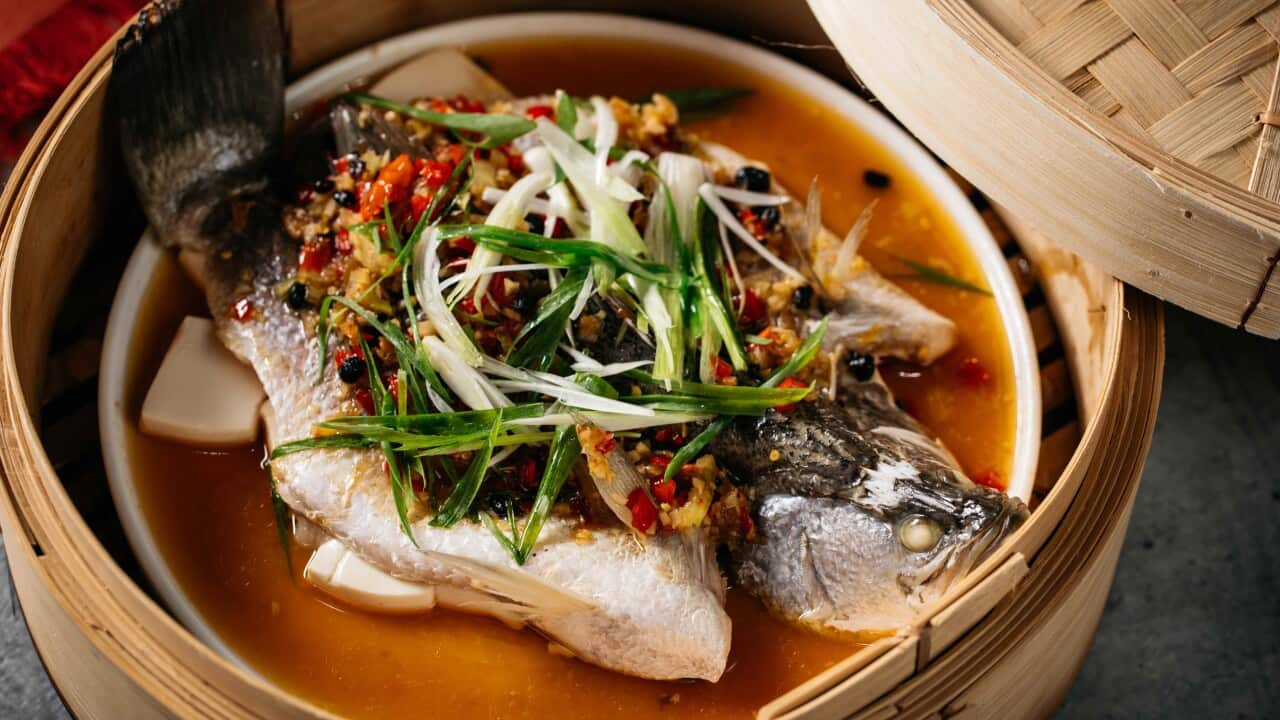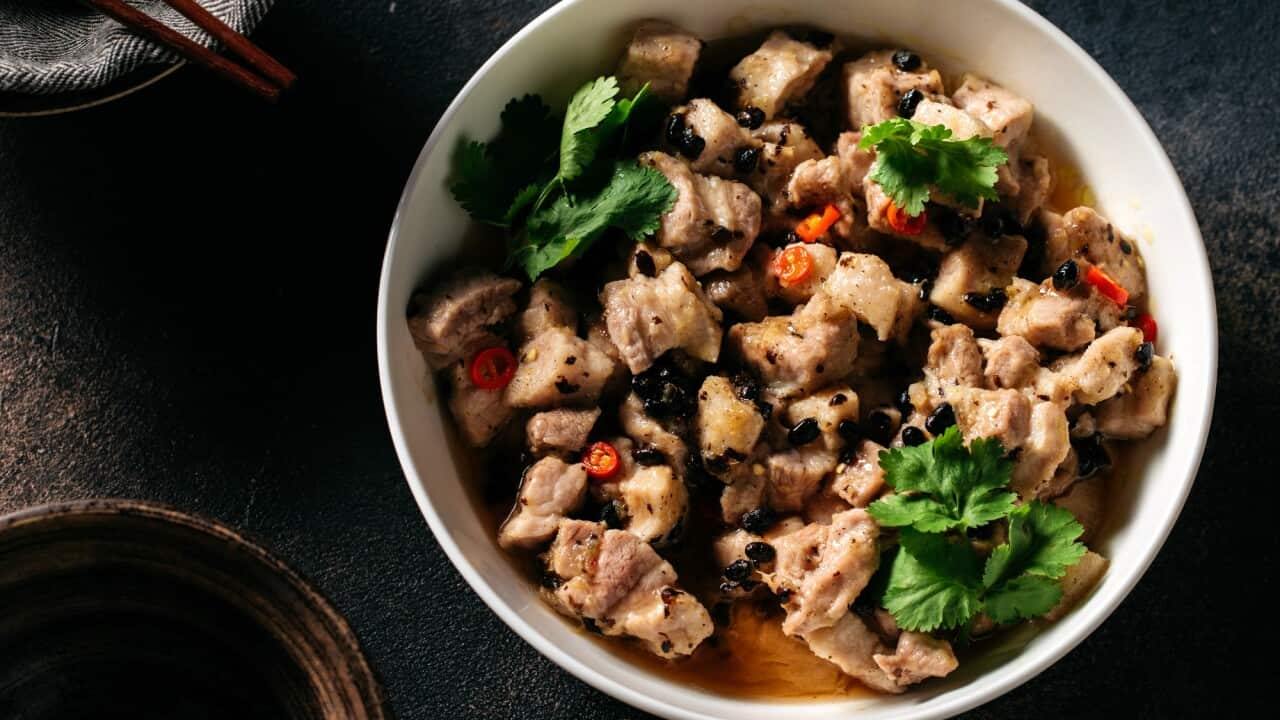--- 's fourth season airs weeknights on SBS Food(Ch.33) at 7.00pm. All episodes available anytime on . ---
While ingredients like rice, soy sauce and sesame oil are readily available in supermarkets across the globe, other key Chinese pantry staples like salted black beans, starch and Tianjin preserved vegetables are often overlooked. Read on to discover the magic of these three underrated ingredients.
Salted black beans
These Chinese flavour bombs, made from fermented black soybeans and salt, have earned their own category on Chinese menus alongside sweet and sour. Pair salted black beans with equally bold flavours like garlic, chilli and ginger in savoury dishes such as , and . Frank Shek, head chef of restaurant in Sydney, grew up eating whole steamed fish with salted black beans, slices of lemon and soy sauce. "The flavour combination was so addictive we would fight for the cooking juices collected on the bottom of the plate," Shek recalls.
Frank Shek, head chef of restaurant in Sydney, grew up eating whole steamed fish with salted black beans, slices of lemon and soy sauce. "The flavour combination was so addictive we would fight for the cooking juices collected on the bottom of the plate," Shek recalls.

Mapo tofu. Source: Adam Liaw
ADAM LIAW RECIPE

Steamed barramundi with chilli, black bean and tofu
Use salted black beans sparingly to avoid overpowering your cooking. Shek suggests starting with one tablespoon, gently mashing the beans with chopped garlic and cooking them lightly in vegetable oil beforehand.
Starch
Although starch is flavourless, it plays a crucial role in Chinese cuisine. Shek cooks with various starches at China Doll including potato, tapioca, chestnuts and rice, and employs each for different purposes.
The aroma as the wok lid was lifted was mouthwatering.
The chef includes starch in marinades before cooking to provide meat and seafood with a smooth mouthfeel. He also dusts or coats proteins in a thin starch batter before deep frying them to make crispy skin. "The starch acts as a barrier to [seal] moisture in the pieces of meat, making each bite juicy and tender," Shek explains.
"The starch acts as a barrier to [seal] moisture in the pieces of meat, making each bite juicy and tender," Shek explains.

Pork spare ribs with black beans. Source: Kitti Gould
Moreover, mixing starch with liquids produces a slurry that thickens sauces and binds liquids, such as that in Shek's .
MOREISH

Scottish-Chinese poutine
Tianjin preserved vegetables
"Tianjin is a province in China famed for its tradition of pickling a local variety of cabbage with salt and garlic, and then packing it into earthenware pots," explains Shek.
Over time, the cabbage ferments and develops a unique salty and umami flavour that elevates Chinese dishes, including soups, stews, stir-fries and congee. Shek fondly remembers his grandmother sprinkling Tianjin preserved vegetables atop whole steamed fish, along with shredded ginger. "The aroma as the wok lid was lifted was mouthwatering," he says. "The flavour of the preserved vegetables permeated the fish and trickled down into the cooking juices, which we spooned over bowls of rice."
Shek fondly remembers his grandmother sprinkling Tianjin preserved vegetables atop whole steamed fish, along with shredded ginger. "The aroma as the wok lid was lifted was mouthwatering," he says. "The flavour of the preserved vegetables permeated the fish and trickled down into the cooking juices, which we spooned over bowls of rice."

Meatball congee. Source: Adam Liaw
While only a small amount of Tianjin preserved vegetables is needed to flavour a dish, it's worthwhile buying or making the dish in bulk. According to Adam Liaw, host of SBS Food's The Cook Up, "You don't use a lot of it, and so you almost never run out."





